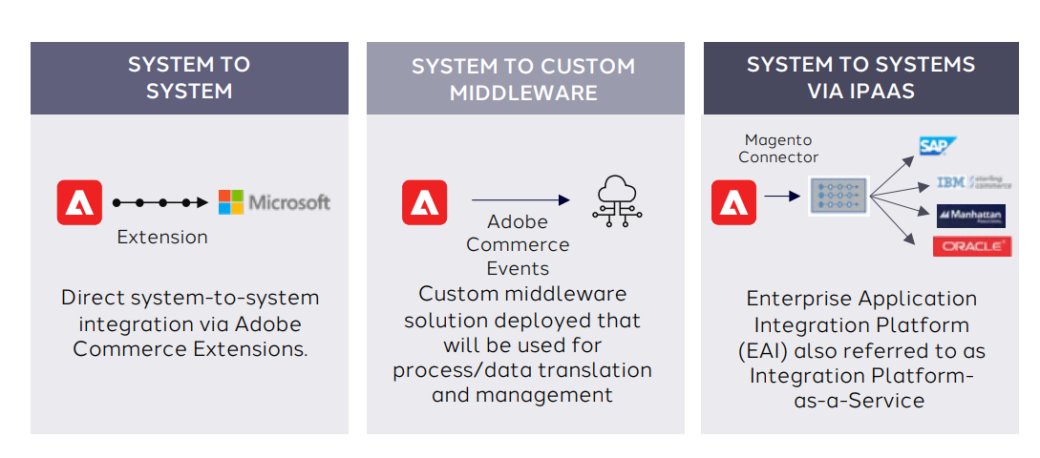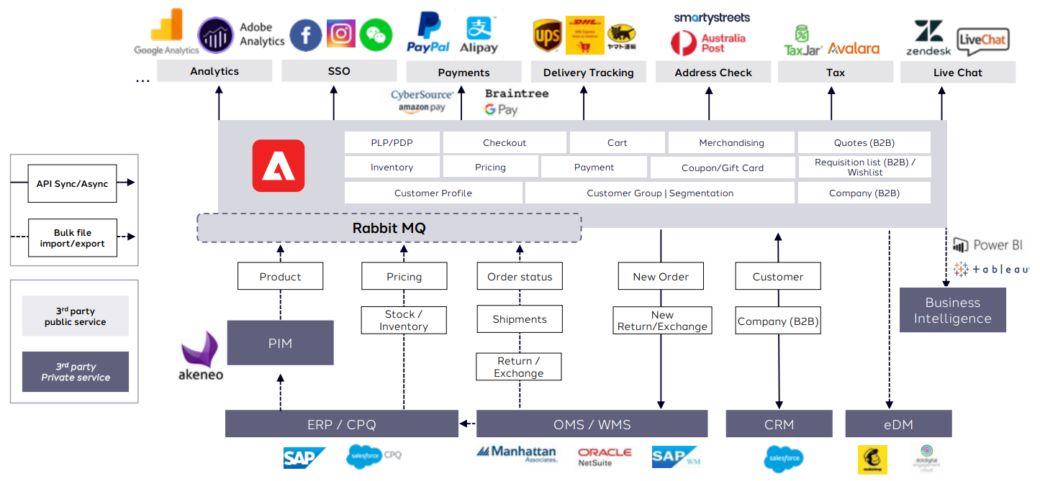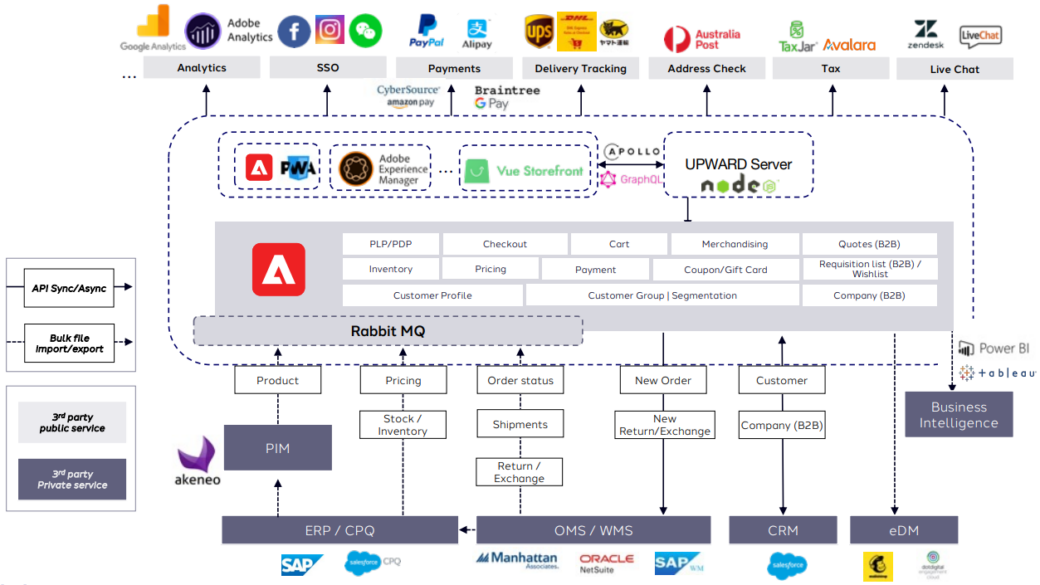Table of Contents
Magento integration and dataflows strategy
Adobe Commerce provides three flexible integration options:
• Direct system-to-system integration with pre-built connectors. Some systems may already have Adobe Commerce extensions on Adobe Commerce Marketplace or their own website.
• System-to-system integration through custom middleware. The implemented custom middleware solution will be used to map, translate, and manage process data.
• System-to-system integration via iPaaS (Integration Platform-as-a-Service), also referred to as EAI (Enterprise Application Integration Platform), e.g., Mulesoft, Boomi, Software AG.
Although real-time integrations are often desirable, they are not necessary in some cases. Adobe Commerce natively supports RabbitMQ as a message bus to enable asynchronous processes, recommended for certain data that does not need to be exchanged in real-time but is updated by batch file exchange or REST batch data processing API for asynchronous processing.
There are two main approaches to integration and data flow, very similar but with one key difference
Monolithic approach: Adobe Commerce as storefront

Headless Approach: Adobe Commerce as the back end and integrated with DXP/CMS/custom application as storefront

The only difference between the monolithic and headless approach is storefront Magento integration, which impacts the user experience for customers. Monolithic uses Adobe Commerce storefront directly to integrate with third-party services, while Headless depends on its own storefront to customize and integrate the same services. Some services like payment and SSO will need both storefront and Adobe Commerce customization to finalize the Magento integration flow.
Some popular services already have great extensions to support Adobe Commerce or popular storefront solutions such as PWA Studio, AEM, and Vue Storefront, which can be found from their extension marketplace or from related third-party websites. Even if there is no existing extension, the effort to implement the integration between Adobe Commerce and other headless storefronts is similar—all third-party services usually have documents to explain how to integrate with them. Those services are just some examples; various countries and markets may have different choices.
For enterprise systems integrations, which are also usually called back-end integrations, there is an impact on the business data flow. Based on different business types and needs, it can use three different Magento integration options, which we already introduced.
Product-mandatory data like SKU inventory and base prices usually come from ERPs, while sales prices are usually managed by each sales channel (e.g., Adobe Commerce) or CPQ (B2B or private sales). Because product-mandatory data (except inventory) does not change very often, the best practice is to use scheduled batch updates, with REST batch update APIs or bulk-file import. For inventory, the best practice is to have a full update on a daily basis for product inventory that is shared with different sales channels to avoid over-sales. Additionally, have incremental changes from your ERP scheduled within 24 hours.
Product catalog, metadata, and marketing content can be managed separately by each sales channel (e.g., Adobe Commerce), or from a central PIM. As metadata is also not changed frequently, the best practice is to use scheduled batch updates, with REST batch update API or bulk-file import.
Order data includes order, quote(B2B), shipment, return, and exchange data usually managed from a centralized OMS and WMS system. Order data should be synchronized as soon as possible, so REST API is usually the best option. For better performance, consider reducing the number of API calls. For the order status, shipments, return, and exchange data, consider scheduling REST batch update APIs in hours or minutes.
B2B data is usually managed from a centralized CRM. A real-time API is used to verify existing customers and create new customers. For B2B, it might require introducing more APIs to synchronize different company employees, groups, and price lists between Adobe Commerce and your CRM or CPQ.
There are some other system integrations like eDM for email marketing and business intelligence for business data analysis— which are usually done either via REST API or file export/import, which is usually supported by existing extensions
Feel free to TALK WITH US and discover more about Magento integration via our tailored Website Development Services or Others Development Services, uniquely crafted to propel your business to greater heights.





